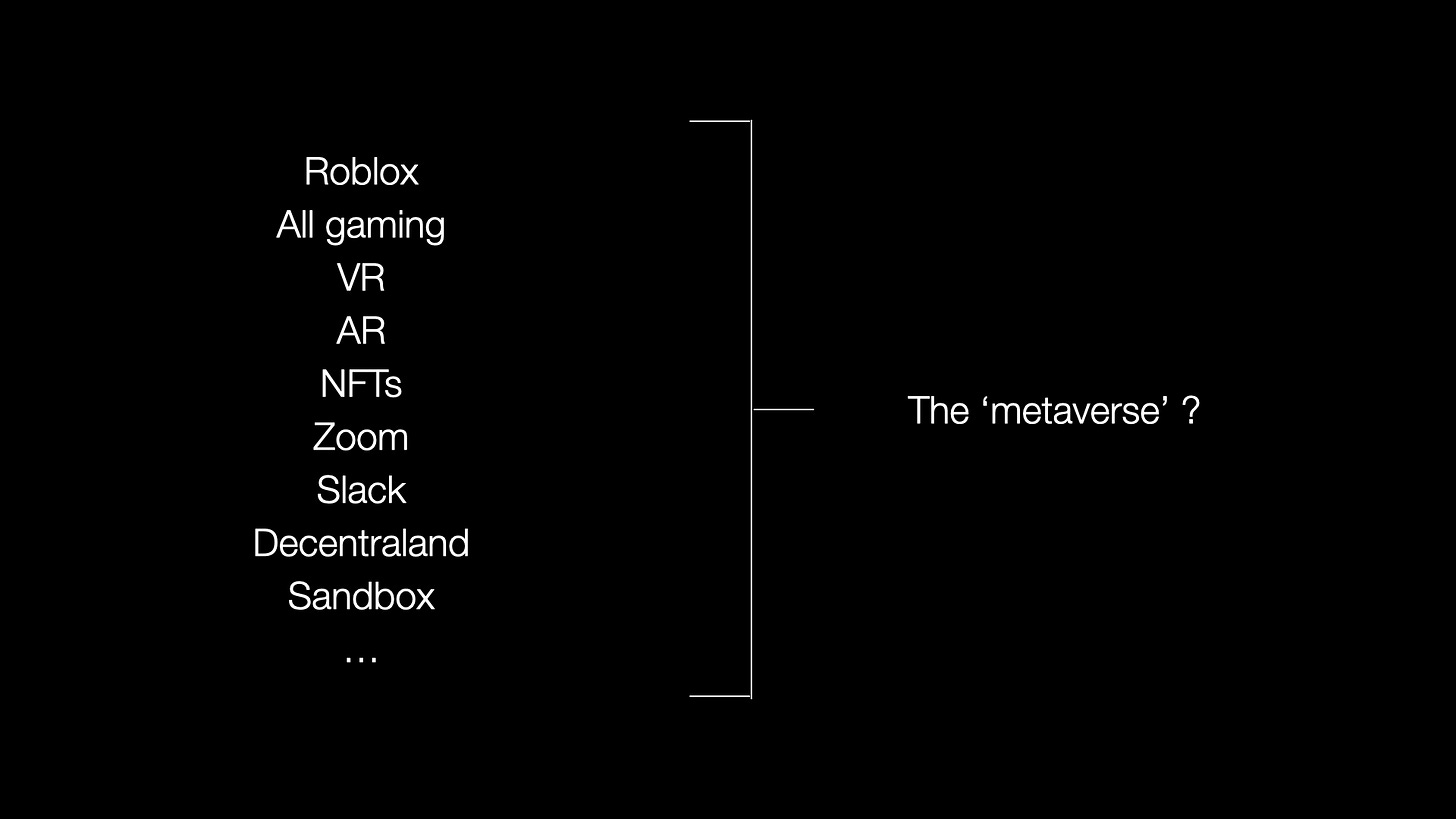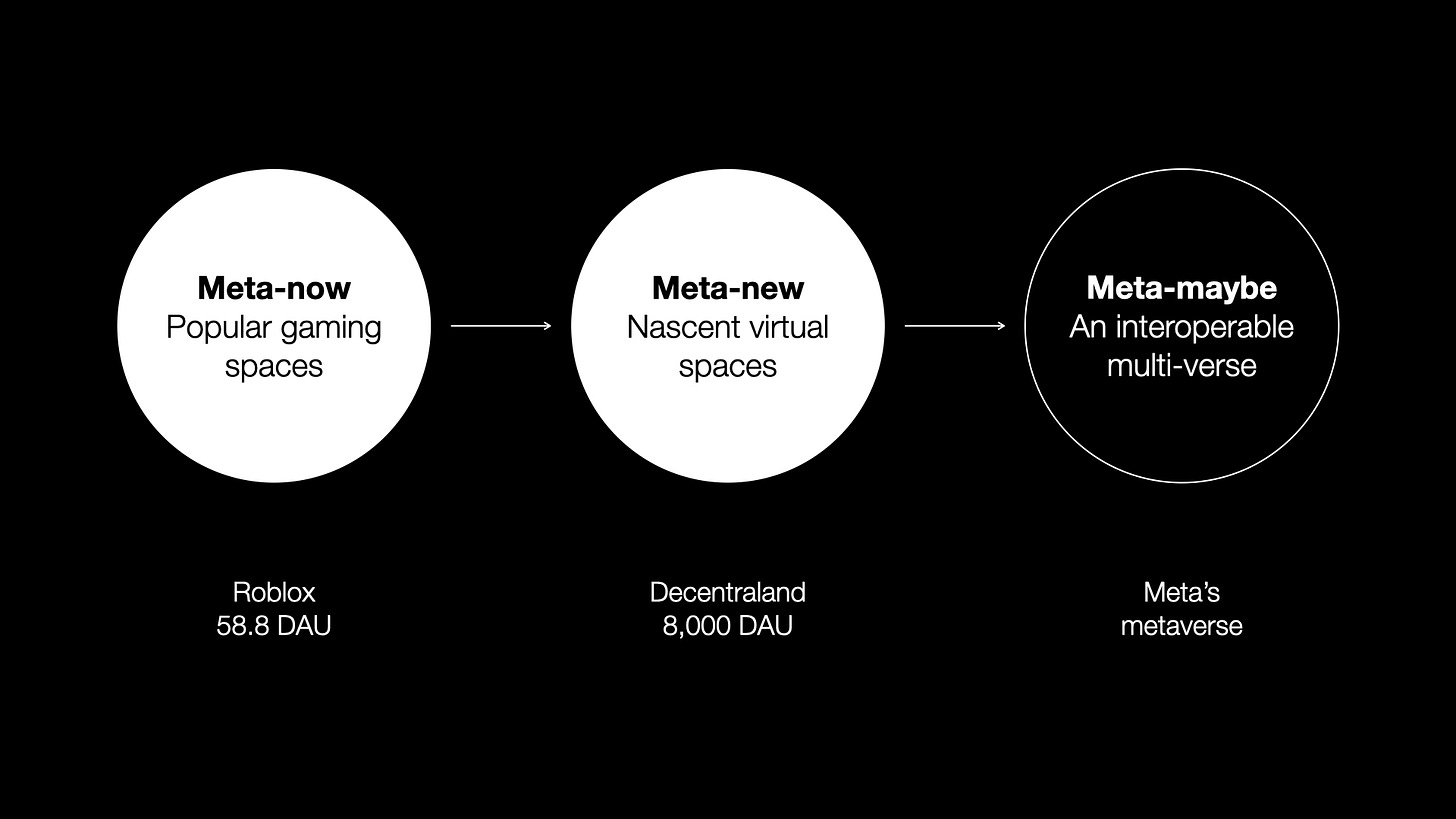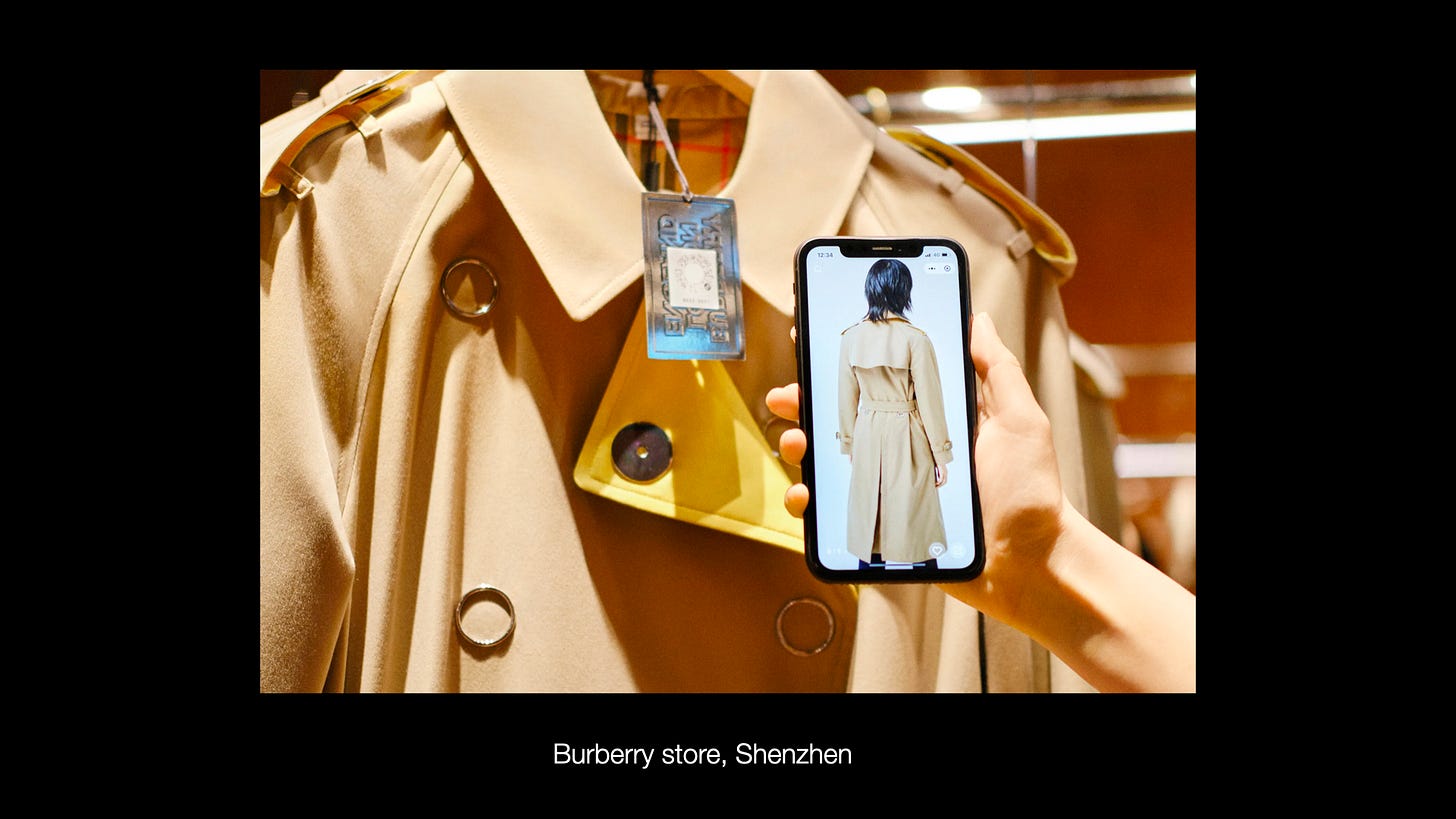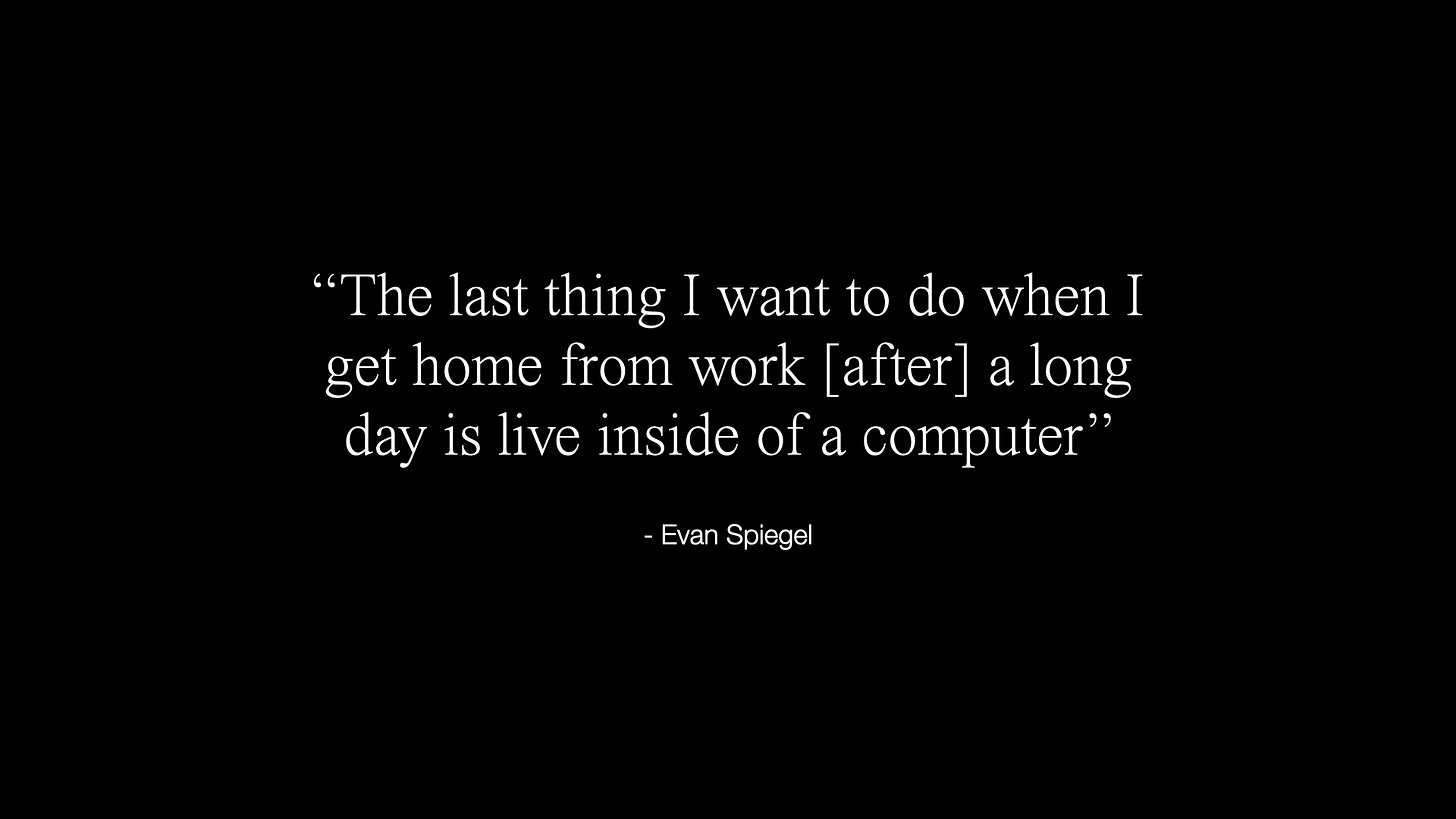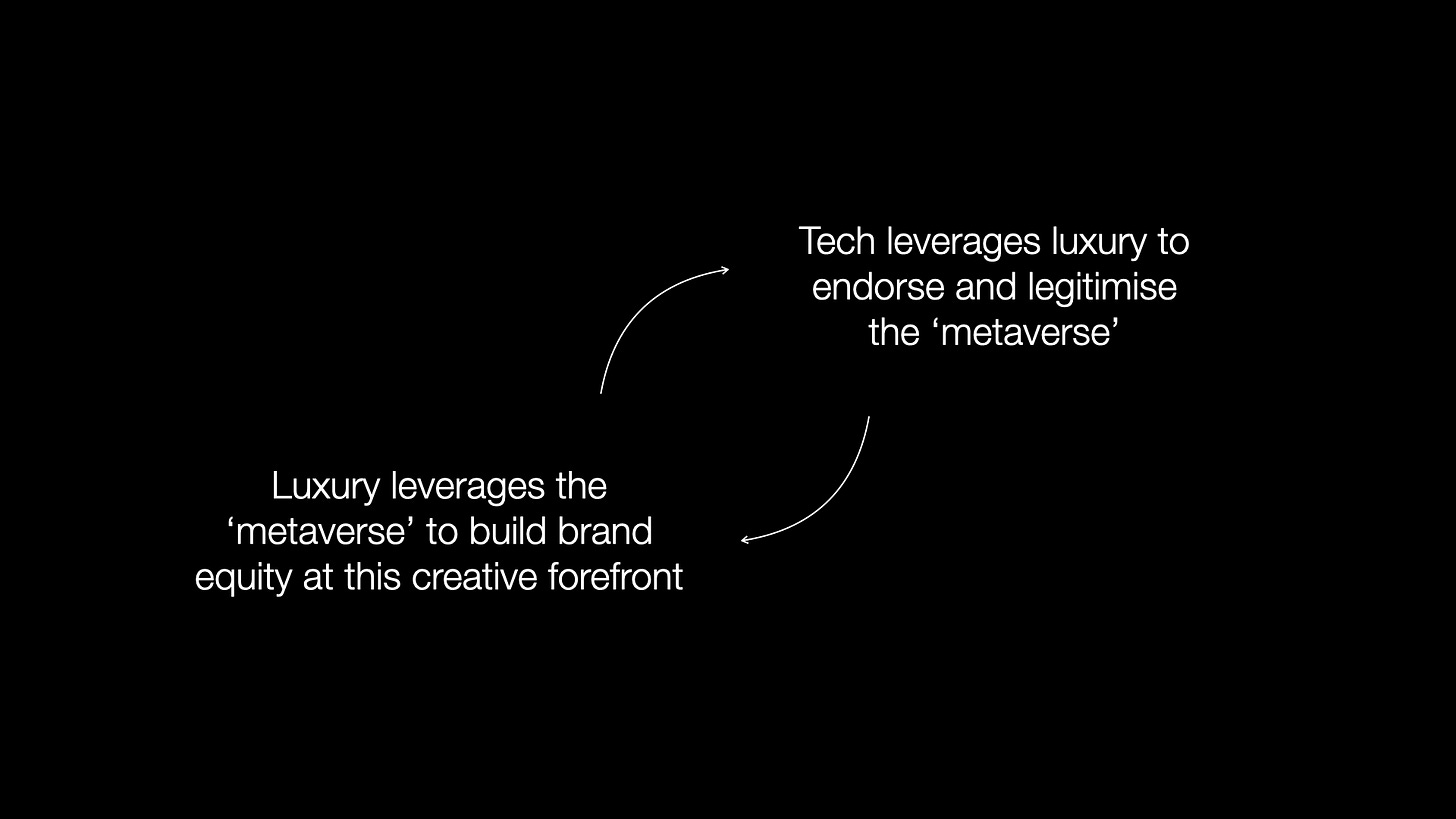As year-end nears, LinkedIn feeds and Substack posts are once again awash with predictions – with many covering the ‘metaverse’.
Already a hot topic for at least 12 months, this still nascent digital frontier continues to demand attention, with Meta making enormous investments in the space and the imminent launch of Apple’s new ‘mixed reality’ headset.
But exactly how the metaverse is developing, and what it offers for brands (and luxury brands too), remains foggy – even though many brands have indeed launched all manner of metaverse experiments this year.
It’s worth a think, therefore, about what we know so far and what we don’t yet understand, and how we might at least make some critical observations to decipher where things could be headed for luxury brands in this space…
‘Metaverse’ is too broad a term to have meaning
The ‘metaverse’ has made its way into dictionaries, referring to a kind of online virtual space where avatars interact with each other and do various things. And that’s probably what most people have in mind when they hear the word. But it has also come to mean a whole lot of others things too, with AR, Roblox, Web3 and NFTs, even Zoom lectures and Slack conversations having been placed by different people under the banner of the ‘metaverse’ – showing just how amorphous and unspecific the word has become, where there is no clear understanding where its boundaries lie. At this point, it’s surely just easier and more helpful to talk about the technology categories themselves.
The metaverse is both a thriving reality and an ambitious vision
The metaverse is curiously both already here and a very, very long way off. Gaming is its already established arm and a thriving entertainment that commands huge numbers of daily active users per platform. But beyond gaming, virtual spaces – for shopping, socialising, banking? – have failed to gain much traction and lack a truly compelling reason for their usage.
And then there’s Meta’s own vision for the metaverse, which either involves sewing up all of the above into a seamlessly interoperable experience or is an entirely new metaverse space altogether – and isn’t anywhere near having been built.
Virtual brand experiences remain a question mark
When thinking about the experience itself, and what it means for luxury brands, things continue to be foggy. Broadly speaking, immersive brand experiences in luxury have tended to take place in physical brand and retail spaces, which have evolved for their ability to pull on emotional levers – as well as tactility and our other senses that are so crucial in conveying this sector’s values.
Meanwhile, digital luxury is tending – very broadly – to centre on convenience, such as product browsing, transacting, and one-to-one customer care and concierge services – largely shaped by how digital experiences are increasingly mobile-first.
The metaverse sort of proposes to combine the two. Or at least take the immersive nature of a physical brand environment and apply that to a digital space. Which could make sense and could be necessary when the technology is good enough. But it might also be a warning sign that momentum is not moving in this direction.
You also end up with some rather unintuitive results, like the skeuomorphic virtual retail spaces that we’ve seen a few brands develop over the past year or so. Is the most useful and delightful way of shopping online really going to be browsing a virtual recreation of a physical store?
Mixed reality/AR shows alignment to nascent shopping behaviours
Where there could be better overlaps with a direction of travel is with mixed reality. We’ve already seen in certain markets – particularly China – that gamified shopping is becoming a compelling way of exploring stores and browsing products. These experiences can also layer in additional information – about sizing, provenance, design attributes – in ways that can be quickly revealed through the shopper’s mobile device. I could see this growing further – although whether it would lead to shoppers entering stores with some form of bulky mixed reality headset is another question entirely.
Affluents tend to use tech to enhance rather than escape their reality
At a recent tech conference hosted by the Wall Street Journal, Evan Spiegel, Snapchat’s CEO and a UHWNI himself, outlined an important and lingering hurdle for VR experiences: “The last thing I want to do when I get home from work after a long day is live inside of a computer.”
VR is obviously an incredibly immersive experience, and the technology will only get better and make that experience better too. But it’s also an unfamiliar and rather intense one – and to Spiegel’s point, not necessarily the sort that people would wish to experience having been on a screen all day long at work.
Furthermore, I tend to think of technology’s role in an affluent person’s life as one of enhancing their physical reality rather than helping them escape it. They have generally leaned into the fact that, through smartphones, technology can be right there with you in the background, supporting at every moment your health and fitness, your ability to stay connected and be productive despite moving through cities and airport lounges, and to stay on top of culture, sports, and the latest luxury product drops, all with seamless ease. I think an ‘immersive’ experience is really what happens in their physical world, either completely disconnected from technology (no news, no shoes) or where technology has a supporting rather than primary role to capture, enhance and reconvey the physical experience to others.
Luxury needs the metaverse, and metaverse needs luxury
Ultimately, I think the reason why the metaverse has been grasped so quickly by a great deal of luxury brands is the symbiotic relationship taking place between the pair.
Luxury has for some time been in what I consider a ‘risk on’ phase, where creative experimentation, rather than historical preservation, has been a primary driver of brand equity for its younger audiences. These brands have therefore taken to the metaverse in the same way they have with other new creative frontiers – places to be very present and experiment generously in order further their overall creative reputation.
At the same time, technology brands – and Meta especially – are still struggling to find the innate human reason why, beyond gaming, people would wish to spend time within the metaverse (at least it remains unclear to me). Luxury fashion brands are therefore being leveraged for their experience factor, and their status-driving and status-signalling abilities – all relevant to a virtual space where users identify themselves to other through avatars – to help build the metaverse’s credibility, familiarity, and cultural appeal.



